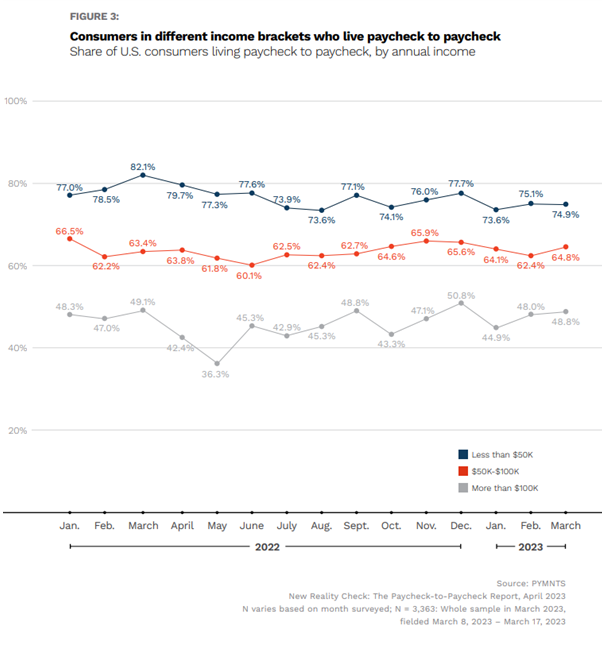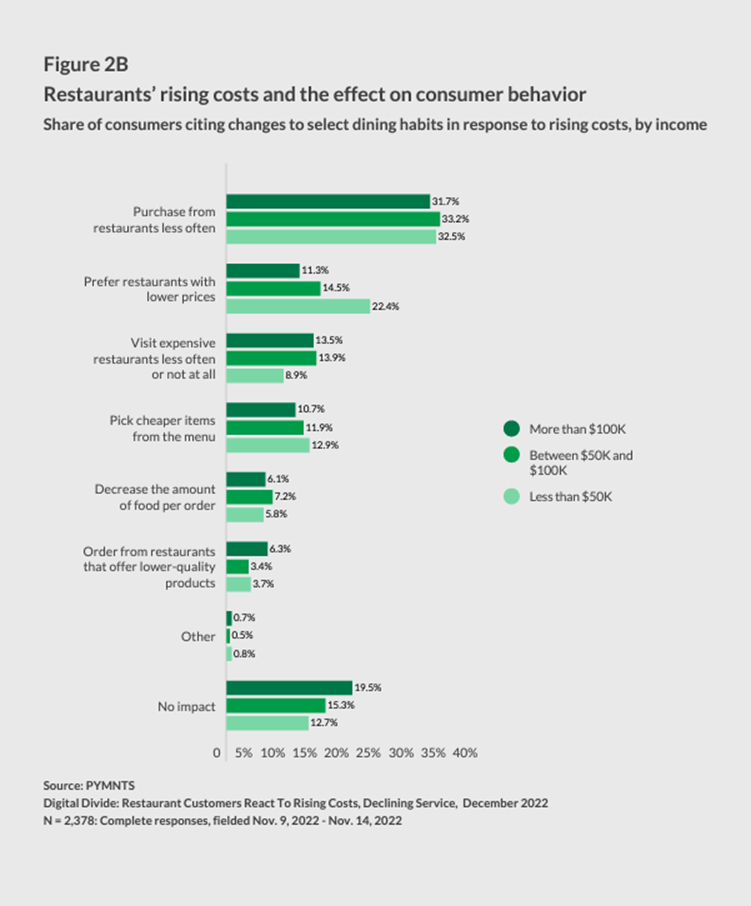High-Income Consumers Reduce Their Nice-to-Haves as the Economy Slows
Affluent paycheck-to-paycheck earners curb, but don’t completely cut, spending across categories when faced with budget concerns.
As consumers across demographics continue to stretch budgets to account for rising costs, higher-income earners are no different, feeling the economic screws tightening around them. As most recently illustrated in the April PYMNTS collaboration with LendingClub, “New Reality Check: The Paycheck-to-Paycheck Report,” the share of these consumers feeling financial pressure has been growing recently.

Since the beginning of 2023, consumers earning more than $100,000 annually are joining the paycheck-to-paycheck ranks at a faster rate than other demographics, rising four percentage points between January and March. The share of middle-income earners only rose less than one percentage point during the same time period, while the share of lower-income earners living paycheck to paycheck actually decreased. (And although there has been some volatility in this metric over the course of this study, the fact that the high-income paycheck-to-paycheck rate did not mirror this rise last year suggests that this is not just a seasonal quirk.)
The adjustment in financial lifestyle for higher-income earners living paycheck-to-paycheck has so far followed patterns similar to those seen in other consumer demographics, albeit with less severity in how they cut back. With consumers adjusting to inflation’s effects lasting longer than initially predicted, Federal Reserve data notes that median household spending growth expectations for consumers making over $100,000 per year dropped to 5% from 5.8% as recently as September.
So, how are higher-income consumers cutting back? Sixty-six percent of this demographic report cutting back on discretionary retail spend, with 55% decreasing their non-essential grocery purchases. This cutting back also includes trading down, as discount retailers such as Big Lots are seeing increased traffic from higher-income earners. The shift in shopper demographic led CEO Bruce Thorn to tell analysts that the typical seasonal customer “has a household income that is two times higher than our core customer … So we see that category as a year-round trade-down opportunity.” Both Walmart and dollar stores are seeing similar trends, with the former noting nearly three-quarters of its grocery share gain came from higher-income consumers.
This demographic is also cutting back on eating out, as detailed in PYMNTS’ “Digital Divide: Restaurant Customers React To Rising Costs.” Of surveyed higher-income consumers, 32% report eating out less, at approximately the same rate as lower- and middle-income consumers. Another 10% save by choosing cheaper menu items.
Affluent consumers are not immune to economic headwinds as inflation lingers and spending slows. While their cutbacks may not be as severe as those of other demographics, the data suggests that consumers across income brackets are buckling down for the long haul.


